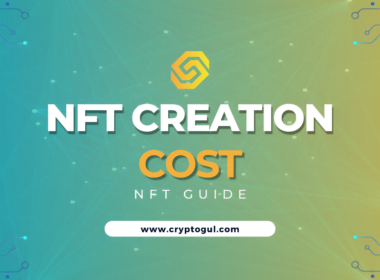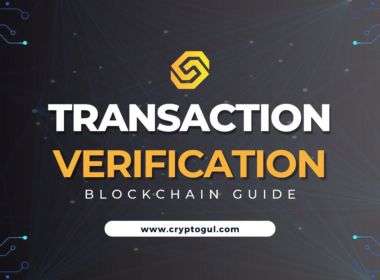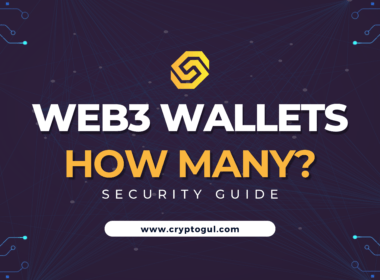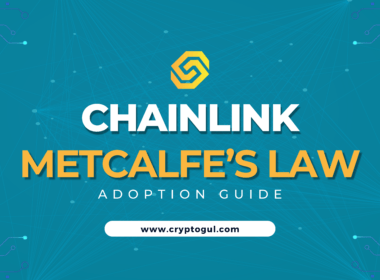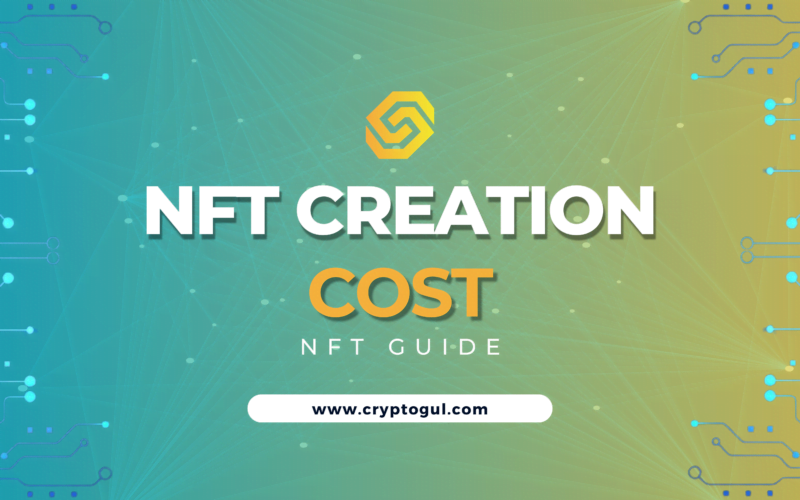Creating an NFT incurs costs that can surprise newcomers. This guide answers ‘how much does it cost to create an NFT’ by outlining the essentials — from gas fees to smart contract nuances — and provides a realistic look at the expense hurdles you might face. Read on for a concise, no-nonsense cost breakdown.
Key Takeaways
Creating an NFT involves understanding blockchain technology, selecting the appropriate digital asset format, and utilizing smart contracts for automating ownership and transaction processes.
Minting costs vary based on blockchain selection, data size, and market conditions, with gas fees and marketplace fees being significant components of the overall cost of NFT creation.
Strategies to manage NFT minting costs include selecting the right time to transact to avoid high fees, embracing alternative minting options like lazy or gasless minting, and carefully choosing the blockchain platform.
NFT Creation Essentials

As we explore the world of NFTs, understanding the process of NFT creation becomes our first priority. It’s a multi-faceted journey, involving an understanding of blockchain technology, digital asset formats, and the role of smart contracts. These elements form the backbone of the NFT creation process, dictating the course of your NFT project.
Understanding Blockchain Technology
Blockchain technology is the bedrock of NFT creation. This secure, decentralized, and transparent system bolsters the uniqueness and security of NFTs. Blockchain preserves the authenticity of digital assets, reducing the risk of fraud and enhancing trust in the NFT market.
This is achieved by storing NFT ownership records and metadata on the blockchain, providing a verifiable and permanent link to where the actual digital file is stored elsewhere.
Digital Assets and Their Formats
NFTs captivate with their versatility. They can represent a wide array of digital assets, including nft collections, which may consist of:
Images
Videos
3D representations
Audio files
Virtual real estate
Gaming tokens
This diversity in digital assets necessitates the choice of appropriate digital formats to ensure the NFTs’ value and compatibility within the marketplace.
The Role of Smart Contracts in NFTs
In the NFT creation process, smart contracts play an unheralded but vital role. These self-executing contracts, embedded with terms directly written into code, automate tasks like:
enforcing and executing NFT ownership and royalty provisions
governing the transfer of NFT ownership
facilitating transactions without intermediaries
managing auction mechanisms with defined conditions
However, it’s vital to note that despite their significant roles, smart contracts are based in code and are not recognized as legal contracts.
The NFT Minting Process Explained

With the essentials under your belt, we can now examine the minting process. Minting transforms a digital file into a unique digital asset on the blockchain, providing a unique identification and proof of ownership. This process involves several steps, including:
Creating a digital asset
Choosing a blockchain
Setting up a digital wallet
Acquiring cryptocurrency
Selecting an NFT marketplace
Following the marketplace’s minting instructions.
From Concept to Token
The transformation from a mere concept to actual token is thrilling. The process of minting NFTs differentiates from simply uploading a digital file as it registers the asset on a decentralized blockchain, confirming its uniqueness and ownership. Each step in the process adds value to the NFT and brings it closer to being a unique digital asset.
Selecting the Right Marketplace for Your NFT
Choosing a marketplace is a decision of utmost importance. It involves evaluating the platform’s reputation, community engagement, user experience, and alignment with the creator’s needs and NFT type. Various marketplaces like OpenSea, Rarible, and Mintable offer different features, supported blockchains, and user interfaces that cater to different audiences.
Selecting the right marketplace can enhance marketing and community building for creators, contributing to the success of the NFT project.
Breaking Down NFT Minting Costs

Now, we’ll dissect the nitty-gritty details of NFT minting costs. These costs can vary widely, influenced by factors such as the chosen blockchain technology, data size, and timing of the minting. A clear understanding of these costs—including gas fees, smart contract interaction fees, and platform fees—is crucial for financial planning and making strategic decisions in the NFT space.
Gas Fees: The Fuel of Blockchain Transactions
Gas fees, a component of the overall NFT minting cost, can range from practically negligible to significantly high amounts, depending on network conditions and activity levels. These fees compensate for the computing energy required to process transactions and secure the blockchain, which is essential for maintaining decentralization, security, and resource allocation in NFT transactions.
Marketplace Fees: The Price of Visibility
Marketplace fees are the price of visibility in the NFT market. These fees, which can range from 2% to 5% per transaction, are the primary revenue source for NFT marketplaces.
Understanding and assessing transaction fees and commission structures are vital for NFT creators as they directly impact the profits from selling NFTs.
Alternative Minting Options

While traditional minting methods can be costly, there are alternative methods that can help reduce costs. These include lazy minting and gasless minting, which can significantly cut down on the costs associated with minting NFT.
Embracing Lazy Minting
Lazy minting is an alternative NFT minting method that allows creators to avoid high gas fees by not minting the token until it is purchased. This significantly reduces the upfront costs for creators and shifts the cost burden to the buyer.
Gasless Minting Methods
Gasless minting is another alternative that allows the creation of NFTs without submitting them to a blockchain and without paying any transaction fees. This method eliminates the need to pay any fees to create NFTs, providing a cost-saving advantage to creators.
The Cost of Creating an Entire NFT Collection

Creating an entire NFT collection is quite an investment. Costs can range broadly from $5,000 to a million dollars, depending on various factors. However, with smart planning and careful decision-making, creators can manage these costs effectively.
Single vs. Series: Pricing Structures
It’s crucial to differentiate the costs associated with single NFTs and series. Bulk minting of NFTs can lead to cost savings as it often incurs fewer fees than minting each NFT individually.
Strategies to Manage Collection Costs
Efficient cost management is paramount in the creation of an entire NFT collection. One strategy is to minimize the file sizes of the NFTs, as smaller file sizes can lead to lower fees overall.
Additional Factors Influencing NFT Creation Costs
Beyond the costs directly related to minting, there are other factors that can influence NFT creation costs. These include:
Marketplace trends
User preferences
Transaction timing
Blockchain capacity
Choosing the Right Blockchain Platform
Your choice of blockchain platform can have a significant impact on the total cost of creating an NFT. Ethereum blockchain, despite being the leading platform for NFT creators and collectors, is one of the more expensive options due to its Proof of Work (PoW) verification method.
Timing and Transaction Fees
Transaction timing can significantly impact minting costs. During peak times on popular blockchains like Ethereum, minting costs can reach up to $500 per NFT due to increased network congestion.
Financial Planning for NFT Creators
For NFT creators, sound financial planning is indispensable. This includes:
Estimating upfront costs
Considering long-term costs associated with maintaining and selling NFTs
Understanding the potential tax implications of buying, selling, and holding NFTs.
Estimating Upfront Costs
Creating an NFT involves initial costs such as software, hardware, establishing a web presence, and marketing efforts, all of which are essential to create NFT successfully.
The average cost to create an NFT in the third quarter of 2022 was approximately $150, though factors like blockchain choice and marketplace can cause variation.
Long-Term Considerations for NFT Holders
NFT holders should consider the ongoing costs associated with maintaining and selling their NFTs. Long-term costs can include transaction fees on sales and additional marketing expenses.
Maximizing Returns on Your NFT Project
To maximize returns on an NFT project, strategic planning and execution are required. This includes setting the right royalty rates and marketing the NFT effectively.
Setting the Right Royalty Rates
Royalty rates are a crucial aspect of NFT sales. Setting appropriate royalty rates provides a mechanism for creators to potentially receive a steady stream of income over the long term from secondary sales of their NFTs.
Marketing Your NFT for Success
The success of an NFT project hinges largely on effective marketing. Effective marketing strategies can significantly increase the visibility and engagement of potential buyers, leading to increased prices and higher royalty earnings over time.
Navigating Legalities and Intellectual Property in the NFT Market
In the realm of NFTs, legal considerations hold equal weight to creative ones. Creators and sellers must navigate a complex matrix of legal risks and compliance issues, including intellectual property rights and data protection and privacy concerns.
Copyright Concerns for NFT Creators
When creating and selling NFTs, it’s crucial to define intellectual property rights clearly to ensure legal clarity and protect the interests of all parties involved.
Protecting Your Work in the Digital Space
To safeguard against NFT theft and unauthorized use, it’s essential to protect your work in the digital space. Using reputable and well-known crypto wallets and marketplaces, implementing two-factor authentication (2FA), and regularly updating wallet software can enhance security.
Summary
Creating an NFT is a journey that involves a blend of creativity, technical know-how, and strategic decision-making. From understanding blockchain technology to choosing the right marketplace, setting appropriate royalty rates, and navigating legalities, each step plays a critical role in the cost of creating an NFT. With this comprehensive guide, you are now equipped with the knowledge to embark on your NFT creation journey confidently and cost-effectively.
Frequently Asked Questions
Is it free to create an NFT?
Yes, it is possible to create an NFT for free using platforms like Polygon or NFT-inator, but there may be small fees involved in the process. However, some marketplaces allow you to defer these fees to the eventual buyer through a process called “lazy minting.”
Is creating your own NFT profitable?
Yes, creating and selling your own NFTs can be profitable, especially if you have a knack for creativity. You can monetize your digital creations by selling them as NFTs.
What is the average NFT fee?
The average cost of creating an NFT ranges from $0.05 to over $150 and varies based on factors like blockchain cost, gas fees, and marketplace fees. Prices can fluctuate depending on these factors.
Can you mint an NFT for free on OpenSea?
Yes, you can mint an NFT for free on OpenSea using “lazy minting,” but keep in mind that gas fees will be required at the time of sale, and listing fees will need to be paid if someone purchases your NFT.
What are the essential components of NFT creation?
To create NFTs, you need to understand blockchain technology, different digital asset formats, and smart contracts. These are the essential components for NFT creation.


